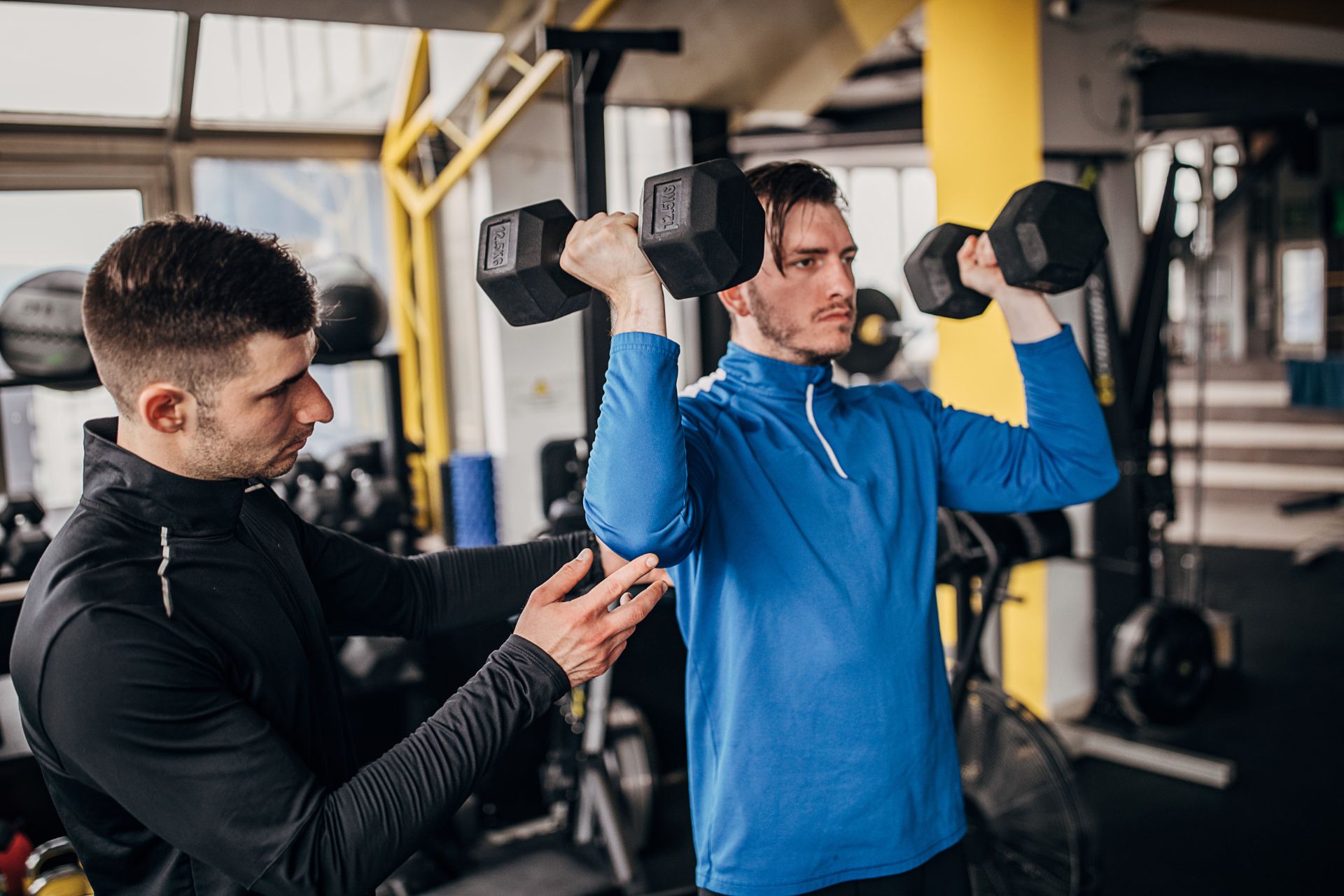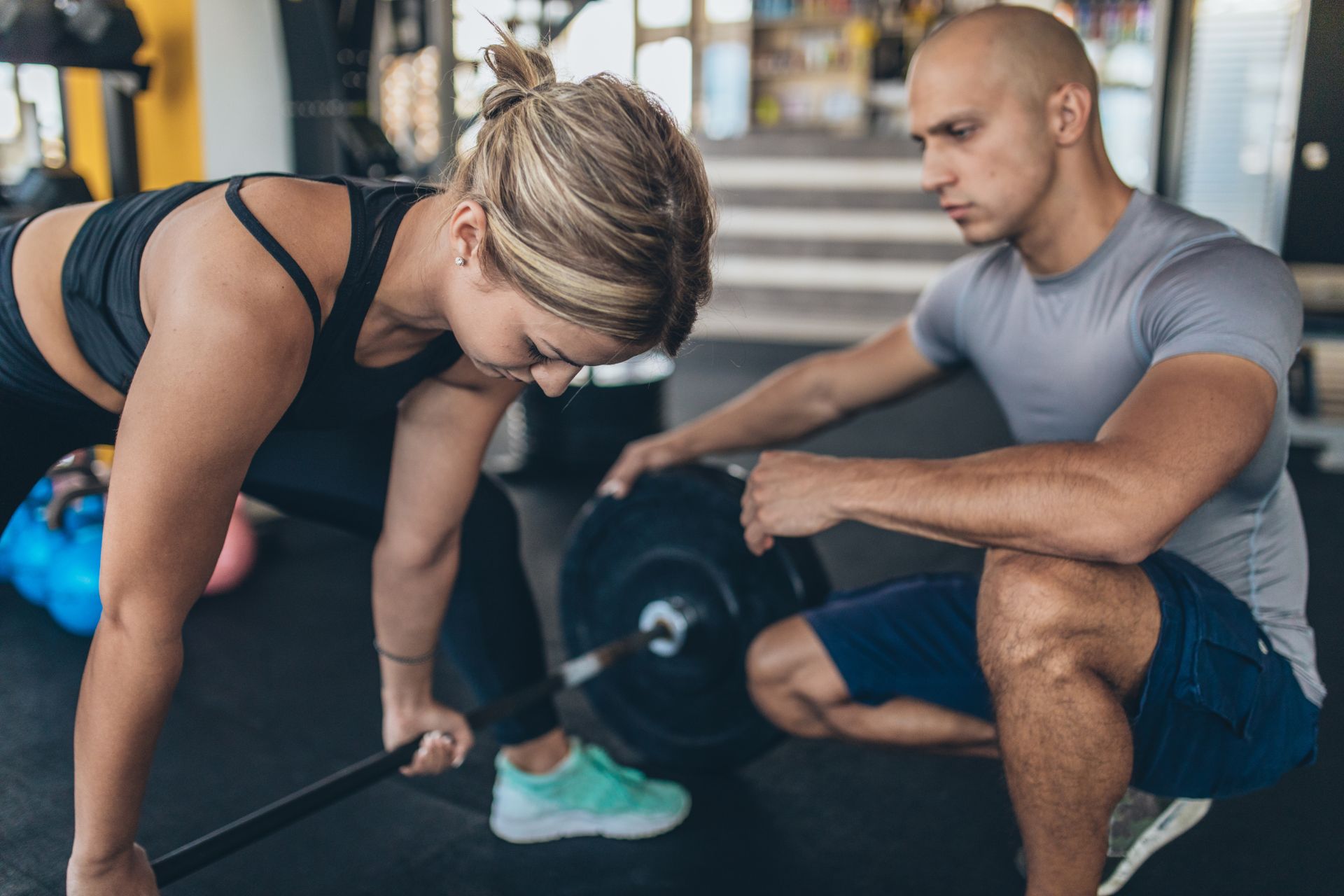Frequently Asked Questions
Dynamic stretching aids in reducing muscle soreness after a workout by enhancing blood circulation, which facilitates the delivery of oxygen and essential nutrients to muscle tissues, thereby accelerating recovery. This type of stretching involves active movements that increase the range of motion and improve flexibility, which helps in reducing muscle stiffness and tension. By promoting synovial fluid production, dynamic stretching lubricates the joints, decreasing the risk of delayed onset muscle soreness (DOMS). Additionally, it activates the neuromuscular pathways, improving muscle coordination and reducing the likelihood of muscle strain. The increased heart rate and body temperature from dynamic stretching also contribute to the removal of metabolic waste products, such as lactic acid, which can accumulate during intense physical activity and contribute to muscle soreness.
The most effective dynamic stretches for post-workout recovery in personal training include leg swings, arm circles, and torso twists, which help enhance flexibility and reduce muscle stiffness. Leg swings, performed both front-to-back and side-to-side, target the hip flexors, hamstrings, and adductors, promoting increased blood flow and joint mobility. Arm circles, executed with both small and large rotations, engage the deltoids, rotator cuffs, and trapezius muscles, aiding in the release of lactic acid and improving shoulder range of motion. Torso twists, which involve controlled rotational movements of the spine, activate the obliques, erector spinae, and intercostal muscles, facilitating spinal alignment and core stability. These dynamic stretches, when incorporated into a cool-down routine, can significantly enhance recovery by reducing delayed onset muscle soreness (DOMS), improving circulation, and maintaining muscle elasticity, ultimately contributing to overall athletic performance and injury prevention.
Dynamic stretching can indeed enhance flexibility and range of motion following exercise by promoting increased blood flow, muscle elasticity, and joint mobility. This type of stretching involves active movements that take muscles through their full range of motion, which can help reduce muscle stiffness and improve neuromuscular efficiency. By incorporating dynamic stretches such as leg swings, arm circles, and torso twists, individuals can experience improved proprioception and muscle coordination, which are crucial for optimal performance and injury prevention. Additionally, dynamic stretching can aid in the removal of metabolic waste products like lactic acid, thereby reducing muscle soreness and enhancing recovery. This approach contrasts with static stretching, which is more effective for long-term flexibility gains when performed post-exercise, as dynamic stretching primarily focuses on preparing the body for physical activity and maintaining functional flexibility.
A dynamic stretching routine should ideally last between 5 to 10 minutes to maximize optimal recovery benefits, enhancing flexibility, increasing blood flow, and reducing muscle stiffness. This duration allows for the activation of major muscle groups, promoting joint mobility and preparing the body for physical activity or aiding in post-exercise recovery. Incorporating movements such as leg swings, arm circles, and torso twists can improve range of motion and neuromuscular efficiency, while also decreasing the risk of injury. By engaging in a well-structured dynamic stretching routine, individuals can experience improved athletic performance, enhanced muscle elasticity, and a more efficient transition from rest to activity or from high-intensity exercise to a state of relaxation.
Dynamic stretching immediately after a workout can present certain risks, particularly if the muscles are already fatigued or if the individual has not adequately cooled down. Engaging in dynamic stretches when the body is still in a heightened state of exertion may lead to muscle strain or exacerbate existing microtears, as the muscles are more susceptible to injury when fatigued. Additionally, improper form or excessive range of motion during dynamic stretching can increase the likelihood of joint instability or ligament stress, particularly in areas like the knees, shoulders, and lower back. It's crucial to consider the individual's fitness level, the intensity of the workout, and any pre-existing conditions, as these factors can influence the safety and effectiveness of post-exercise dynamic stretching. Furthermore, transitioning too quickly from high-intensity exercise to dynamic stretching without a proper cool-down period may not allow the heart rate to stabilize, potentially leading to dizziness or lightheadedness. Therefore, while dynamic stretching can be beneficial for maintaining flexibility and promoting recovery, it should be approached with caution and tailored to the individual's specific needs and physical condition.

